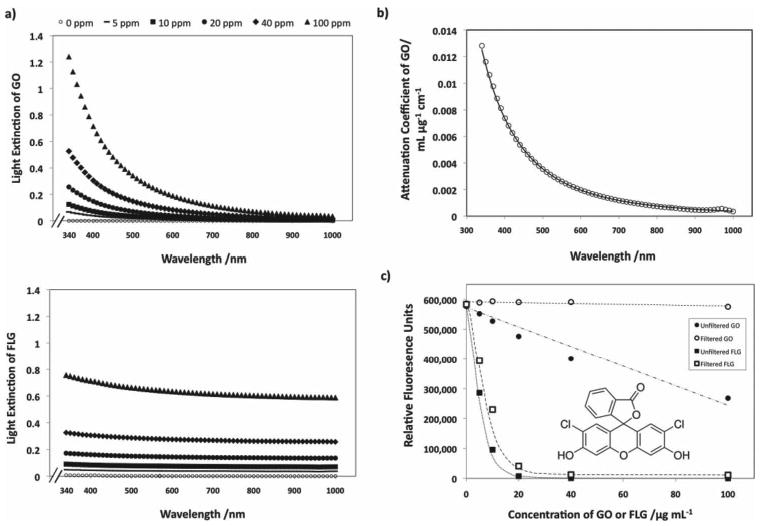Figure 2.

Capability of graphene materials to interfere with light during in vitro assays. A) Dose dependent optical absorption spectra for FLG (above) and GO (below) samples in PBS at a path length of 1 centimeter. GO is naturally hydrophilic and readily disperses, FLG was predispersed using 0.5% fetal bovine serum (FBS) by volume. B) The wavelength-dependent adsorptivity coefficient for GO, with units of mL ug−1 cm−1, as fit by the function 2 × 106λ−3.27, where λ is the wavelength in nm. FLG was found to have a specific attenuation coefficient of 0.0073 ± 0.0013 mL ug−1 cm−1, approximately independent of wavelength. C) Fluorescence quenching of the ROS molecular probe, dichlorofluorescein (DCF) by two graphene materials. DCF was prepared at a concentration of 10 ug mL−1 in PBS buffer (pH 7.4). The fluorescence of DCF dye is only affected when measured in the presence of GO; upon removal, the signal is restored to that of the control. There is only a partial recovery of fluorescent signal in the case of DCF, indicating that most of the quenching is caused by physical adsorption of the dye, which is removed along with the FLG by filtration.
